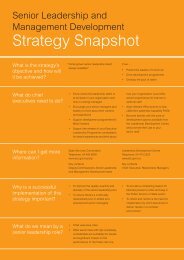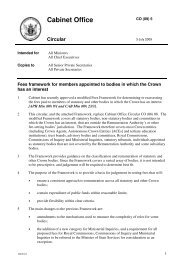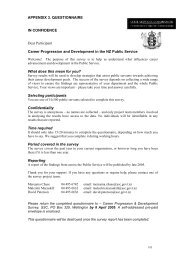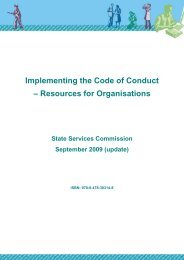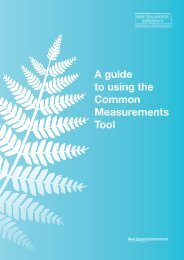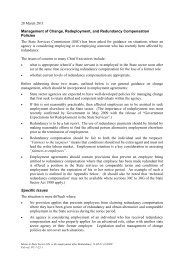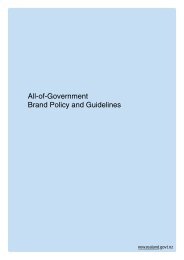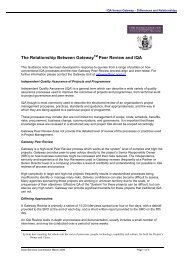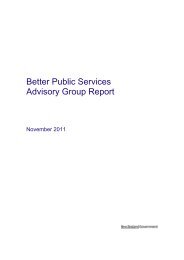Performance Measurement Text.indd - State Services Commission
Performance Measurement Text.indd - State Services Commission
Performance Measurement Text.indd - State Services Commission
Create successful ePaper yourself
Turn your PDF publications into a flip-book with our unique Google optimized e-Paper software.
MODULE 4 – DEFINING OUTCOMES, INTERMEDIATE OUTCOMES AND OUTPUTS<br />
Visioning to generate outcomes<br />
Scenario-based planning can be time intensive and may not be appropriate for all agencies.<br />
A more rapid but less robust way of looking to the future is visioning. The basic approach is<br />
to hold participative, facilitated sessions with relevant stakeholders. The sessions encourage<br />
creative thinking about desirable futures and focus on bringing convergence among the group<br />
around these futures. The process also promotes more detailed generation of outcomes and<br />
impacts by focusing on analysis of future contexts, based on what is known about the present<br />
and any prominent trends shaping the future.<br />
Examples of good practice<br />
Outcome Example 1: facilitation at the border<br />
The following example is a shared outcome of the border sector group of government<br />
agencies led by New Zealand Customs. It provides a description of the rationale for having<br />
this outcome, along with details of what realising this outcome will look like. It should be<br />
noted that this outcome is draft and work in progress.<br />
Sector outcome: Facilitation<br />
“New Zealand’s economic and social interests are enhanced by facilitating the flow of<br />
legitimate trade and travel across the border.”<br />
Why this outcome?<br />
At the physical border, all three main border agencies are involved in similar high volume<br />
capital and labour intensive transactional processing of people, goods and craft in a<br />
common space (ie ports and airports). While not identical, agency border operations share<br />
many common attributes. Even modest efficiency improvements can be expected to result<br />
in significant cost savings to Government and industry stakeholders.<br />
Facilitation of legitimate trade and travel has been an outcome with which border agencies<br />
have been associated for a long period of time. Government has a sovereign need to<br />
place controls on flows across its borders, meaning traders and travellers cannot cross<br />
New Zealand’s borders without having to undertake some control activities. There are<br />
also obligations under a range of international agreements New Zealand has to meet for<br />
trade, immigration and travel. However, the Government wishes to reduce border-related<br />
compliance costs for legitimate traders and travellers as much as possible. To do so is good<br />
for the economy and good for New Zealand’s international reputation.<br />
In the border sector context, this outcome is focused specifically on where border agencies’<br />
activities and interests intersect, and where dealing with them from a sector perspective will<br />
create greater efficiencies and effectiveness of trade and travel flows than from agencies<br />
working independently of one another or even less closely together.<br />
36 PERFORMANCE MEASUREMENT August 2008




